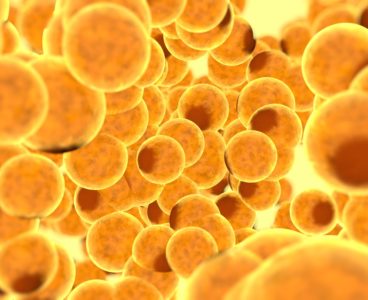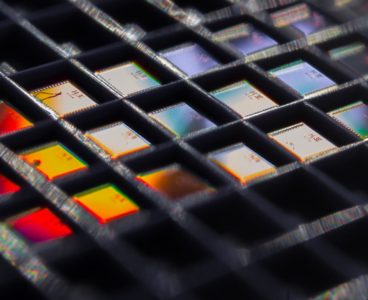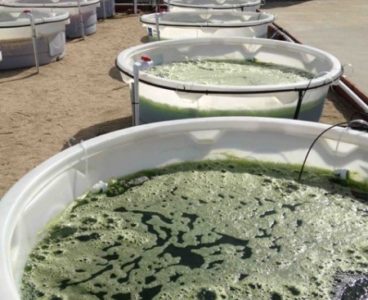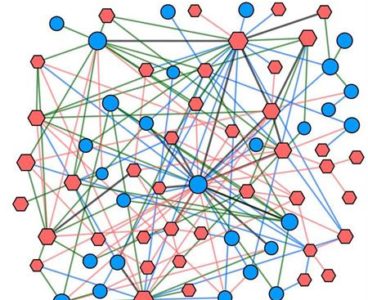
Study Identifies California Cliffs at Risk of Collapse
Danger – Unstable Cliffs – Stay Back: The yellow warning signs that pepper coastal cliffs from northern California to the US-Mexico border may seem overly dramatic to the casual observer. But actively eroding cliffs make up the majority of the California coastline, and sudden landslides and collapses have caused injuries and several fatalities in recent…
SMART: Facial Recognition for Molecular Structures
An interdisciplinary team of researchers at the University of California San Diego has developed a method to identify the molecular structures of natural products that is significantly faster and more accurate than existing methods. The method works like facial recognition for molecular structures–it uses a piece of spectral data unique to each molecule and then…
Drug-Delivering Micromotors Treat Their First Bacterial Infections in the Stomach
Nanoengineers at the University of California San Diego have demonstrated for the first time using micromotors to treat a bacterial infection in the stomach. These tiny vehicles, each about half the width of a human hair, swim rapidly throughout the stomach while neutralizing gastric acid and then release their cargo of antibiotics at the desired…
Repurposed Asthma Drug Shows Blood Sugar Improvement Among Some Diabetics
‘Near-Zero-Power’ Temperature Sensor Could Make Wearables, Smart Home Devices Less Power-Hungry
Electrical engineers at the University of California San Diego have developed a temperature sensor that runs on only 113 picowatts of power — 628 times lower power than the state of the art and about 10 billion times smaller than a watt. This “near-zero-power” temperature sensor could extend the battery life of wearable or implantable…
Electrolytes Made from Liquefied Gas Enables Batteries to Run at Ultra-Low Temperatures
Engineers at the University of California San Diego have developed a breakthrough in electrolyte chemistry that enables lithium batteries to run at temperatures as low as -60 degrees Celsius with excellent performance — in comparison, today’s lithium-ion batteries stop working at -20 degrees Celsius. The new electrolytes also enable electrochemical capacitors to run as low…
Nano-Fiber Feels Forces and Hears Sounds Made by Cells
Engineers at the University of California San Diego have developed a miniature device that’s sensitive enough to feel the forces generated by swimming bacteria and hear the beating of heart muscle cells. The device is a nano-sized optical fiber that’s about 100 times thinner than a human hair. It can detect forces down to 160…
First EPA-Approved Outdoor Field Trial for Genetically Engineered Algae
Scientists at the University of California San Diego and Sapphire Energy have successfully completed the first outdoor field trial sanctioned by the U.S. Environmental Protection Agency for genetically engineered algae. In a series of experiments funded by the U.S. Department of Energy, the researchers tested a genetically engineered strain of algae in outdoor ponds under…
Nanowires Could Accelerate Development of Drugs for Neurological Diseases
A team led by engineers at the University of California San Diego has developed nanowires that can record the electrical activity of neurons in fine detail. The new nanowire technology could one day serve as a platform to screen drugs for neurological diseases and could enable researchers to better understand how single cells communicate in…
Gene Editing Technique Helps Find Cancer’s Weak Spots
Genetic mutations that cause cancer also weaken cancer cells, creating an opportunity for researchers to develop drugs that will selectively kill them, while sparing normal cells. This concept is called “synthetic lethality” because the drug is only lethal to mutated (synthetic) cells. Researchers at UC San Diego School of Medicine and Jacobs School of Engineering…
UCSD Researcher to Study Most Effective Treatment for Kawasaki Disease
Precision-Medicine Approach Could Revive Prostate Cancer Test
Teaching Computers to Recognize Sick Guts
A new proof-of-concept study by researchers from the University of California San Diego succeeded in training computers to “learn” what a healthy versus an unhealthy gut microbiome looks like based on its genetic makeup. Since this can be done by genetically sequencing fecal samples, the research suggests there is great promise for new diagnostic tools…
Understanding Why Liver Cancer Drugs Fails
Largest Study of Its Kind Finds Rare Genetic Variations Linked to Schizophrenia
Engineers Develop New Magnetic Ink to Print Self-Healing Devices
A team of engineers at the University of California San Diego has developed a magnetic ink that can be used to make self-healing batteries, electrochemical sensors and wearable, textile-based electrical circuits. The key ingredient for the ink is microparticles oriented in a certain configuration by a magnetic field. Because of the way they’re oriented, particles…
Study: Earthquakes Can Trigger Near-Instantaneous Aftershocks on Different Faults
According to a new study by scientists at Scripps Institution of Oceanography at the University of California San Diego, a large earthquake on one fault can trigger large aftershocks on separate faults within just a few minutes. These findings have important implications for earthquake hazard prone regions like California where ruptures on complex fault systems…


















